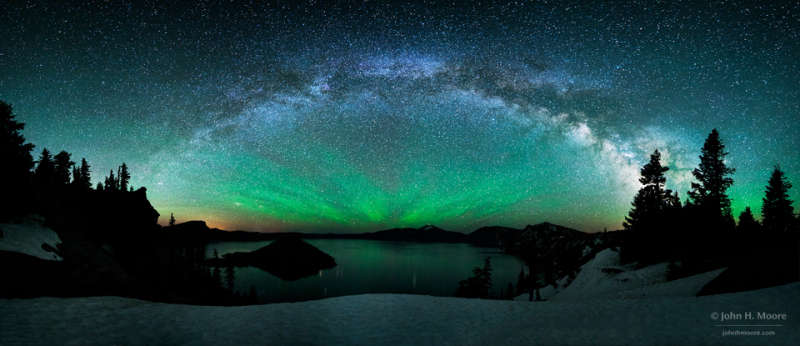
|
Credit & Copyright: Judy Schmidt
Explanation:
How many different astronomical phenomena have come together to create the above
vista?
Several.
First, in the foreground, is
Crater Lake --
a caldera created by volcanism on planet Earth about 7,700 years ago.
Next, inside the lake, is water.
Although the origin of the water in the crater is melted snowfall,
the origin of water on Earth more generally is
unclear,
but possibly related to ancient Earthly-impacts of
icy bodies.
Next, the green glow in the sky is
airglow,
light emitted by atoms high in the Earth's atmosphere as they recombine
at night after being separated during the day by energetic sunlight.
The many points of light in the sky are stars, glowing by
nuclear fusion.
They are far above the atmosphere but
nearby to our Sun in
the
Milky Way Galaxy.
Finally, the bright arch across the image is the
central band of the Milky Way,
much further away, on the average, than the nearby stars, and
shaped mostly by gravity.
Contrary to appearances, the Milky Way band glows by
itself and is not illuminated by the airglow.
The above image is a six-frame panorama taken during about two weeks ago in
Oregon,
USA.
|
January February March April May June July August September October November December |
| ||||||||||||||||||||||||||||||||||||||||||||||||
NASA Web Site Statements, Warnings, and Disclaimers
NASA Official: Jay Norris. Specific rights apply.
A service of: LHEA at NASA / GSFC
& Michigan Tech. U.
Based on Astronomy Picture
Of the Day
Publications with keywords: Milky Way
Publications with words: Milky Way
See also:
